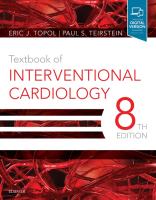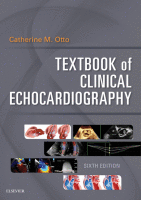Physical Address
304 North Cardinal St.
Dorchester Center, MA 02124

Key Points Functional tests such as stress electrocardiography (ECG), stress echocardiography, and stress nuclear perfusion imaging have limited accuracy for the detection of anatomic coronary artery disease but provide important prognostic information. Normal functional testing, including exercise echocardiography and myocardial perfusion imaging (MPI), is associated with a low risk of cardiac events. The extent of stress-induced segmental wall motion and perfusion abnormalities helps to define which…

Key Points Although all diabetic individuals should be considered at high cardiovascular (CV) risk, those with at least one additional CV risk factor or with target-organ damage should be considered at very high CV risk. Subjects with diabetes have twofold higher risk of dying from coronary artery disease (CAD) than do nondiabetic individuals. Chronic hyperglycemia, dyslipidemia, oxidative stress, and insulin resistance have been associated with the…

Key Points When coronary revascularization is considered, prognostic and symptomatic indications must be distinguished. In general, percutaneous coronary intervention (PCI) for single-vessel disease is justified only if an improvement of symptoms can be anticipated or ischemia that comprises more than 10% of the left ventricle can be relieved. With multivessel disease or left main coronary artery (LMCA) stenosis, the decision for PCI versus coronary artery bypass…

Key Points Changes in the demographics of patients who present in need of revascularization, advances in percutaneous and surgical revascularization techniques, and results from contemporary studies of percutaneous versus surgical revascularization have made it essential that patients be assessed as individuals prior to selection of a treatment strategy. Risk stratification plays an important role in the assessment of patients undergoing revascularization. Clinical tools used to assist…

You’re Reading a Preview Become a Clinical Tree membership for Full access and enjoy Unlimited articles Become membership If you are a member. Log in here

You’re Reading a Preview Become a Clinical Tree membership for Full access and enjoy Unlimited articles Become membership If you are a member. Log in here

You’re Reading a Preview Become a Clinical Tree membership for Full access and enjoy Unlimited articles Become membership If you are a member. Log in here

Echocardiography plays a key role in the management of patients undergoing cardiac procedures in the operating room, cardiac catheterization laboratory, and hybrid procedure suites. Echocardiographic approaches include transthoracic echocardiography (TTE), transesophageal echocardiography (TEE), epicardial imaging, or intracardiac echocardiography, depending on the specific procedure and monitoring needs. TTE imaging typically is performed by a cardiac sonographer or noninvasive cardiologist, epicardial imaging by the cardiac surgeon, and intracardiac…

Congenital heart disease in adults has two basic categories: ■ The initial clinical presentation of previously undiagnosed and untreated congenital defects ■ Survival into adulthood of patients with known congenital heart disease and previous surgical procedures In adult patients with no previous diagnosis of heart disease, a congenital defect often is not considered as a potential cause of symptoms, and thus the initial diagnosis may be…

Echocardiographic evaluation of the aorta and main pulmonary artery is a routine part of the standard echocardiographic examination. For descriptive purposes, the aorta is divided into segments, beginning at the aortic valve, including the: ■ Aortic annulus ■ Sinuses of Valsalva ■ Sinotubular junction ■ Ascending aorta ■ Aortic arch ■ Descending thoracic aorta ■ Proximal abdominal aorta The term aortic root has a variable definition…

A cardiac mass is defined as an abnormal structure within or immediately adjacent to the heart. The three basic types of cardiac masses are: ▪ Tumor ▪ Thrombus ▪ Vegetation Abnormal mass lesions must be distinguished from the unusual appearance of a normal cardiac structure, which may be mistakenly considered an apparent “mass.” Echocardiography allows dynamic evaluation of intracardiac masses with the advantage, compared with other…

Echocardiography is an essential component of the evaluation of a patient with infective endocarditis. In combination with clinical and bacteriologic data, the echocardiographic finding of a valvular vegetation allows for an accurate diagnosis of endocarditis. In addition, echocardiographic assessment of the degree of valve dysfunction and detection of complications, such as a paravalvular abscess or fistula, are needed for optimal patient care. Although transthoracic echocardiography (TTE)…

Echocardiographic evaluation of prosthetic valves is similar, in many respects, to the evaluation of native valve disease. However, some important differences exist. First, several types of prosthetic valves are available, with differing fluid dynamics for each basic design and differing flow velocities for each valve size. Second, the mechanisms of valve dysfunction are somewhat different from those for native valve disease. Third, the technical aspects of…

Echocardiographic evaluation of the patient with valvular regurgitation includes an assessment of valve anatomy, the severity of regurgitation, chamber dilation due to the imposed volume overload, ventricular function, and the degree of pulmonary hypertension. In some cases, the clinical significance of valvular regurgitation is related to the presence of abnormal regurgitation, regardless of severity. For example, the detection of aortic regurgitation (AR) in a patient with…

Basic Principles Approach to the Evaluation of Valvular Stenosis Narrowing, or stenosis, of a cardiac valve can be due to a congenitally abnormal valve, a postinflammatory process (e.g., rheumatic), or age-related calcification. As the degree of valve opening decreases, the increasing obstruction to blood flow results in an increased flow velocity and pressure gradient across the valve. In isolated valve stenosis, clinical symptoms typically occur when…

Pericardial Anatomy and Physiology The pericardium consists of two serous surfaces surrounding a closed, complex, saclike potential space. The visceral pericardium is continuous with the epicardial surface of the heart. The parietal pericardium is a dense but thin fibrous structure that is apposed to the pleural surfaces laterally and blends with the central tendon of the diaphragm inferiorly. Around the right and left ventricles (RV and…

Cardiomyopathy is defined as a primary disease of the myocardium, excluding myocardial dysfunction due to ischemia or chronic valvular disease. Several approaches to the classification of cardiomyopathies are possible, such as etiology or anatomy, but a physiologic classification is most useful clinically. The three basic physiologic categories of cardiomyopathy are: ■ Dilated ■ Hypertrophic ■ Restrictive The disease process in an individual patient tends to correspond…

Evaluation of patients with suspected or documented coronary artery disease is one of the most common indications for echocardiography. Evaluation typically focuses on functional changes due to coronary artery narrowing or occlusion—specifically systolic wall thickening and endocardial motion—rather than on direct imaging of the coronary arteries. Although the proximal left main and right coronary arteries often can be identified, even on transthoracic images, ultrasound imaging currently…

Ventricular emptying and filling are complex interdependent processes, with the cardiac cycle conceptually divided into systole and diastole to allow clinical measurements of disease severity. Diastolic ventricular dysfunction plays a key role in the clinical manifestations of disease in patients with a wide range of cardiac disorders. In patients with clinical heart failure who have a preserved ejection fraction (HFpEF), diastolic dysfunction is the predominant cause…

The degree of ventricular systolic dysfunction is a potent predictor of clinical outcome for a wide range of cardiovascular disease, including ischemic cardiac disease, cardiomyopathies, valvular heart disease, and congenital heart disease. Echocardiographic estimates of global and regional function, quantitative ventricular volumes and ejection fractions, and Doppler echocardiographic ejection phase indices all are valuable clinical tools. Even when evaluation of ventricular systolic function is not the…